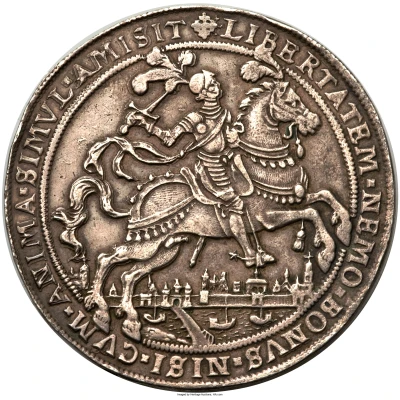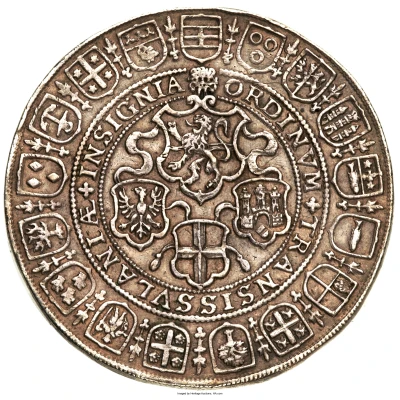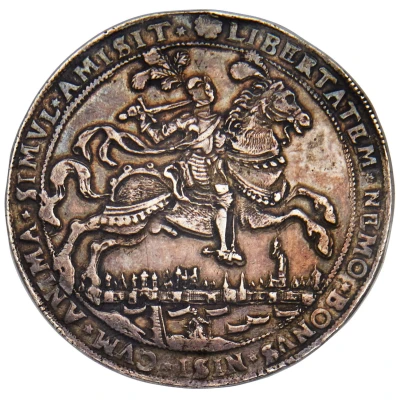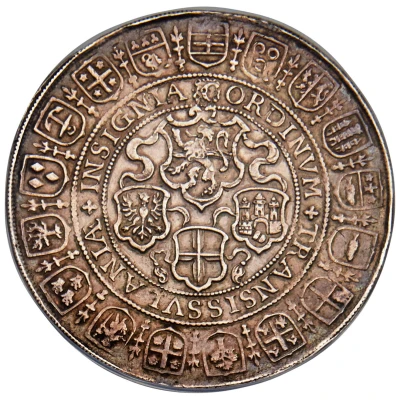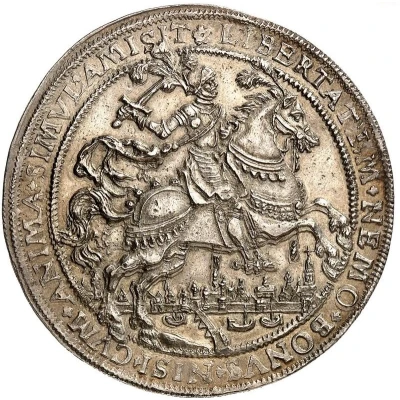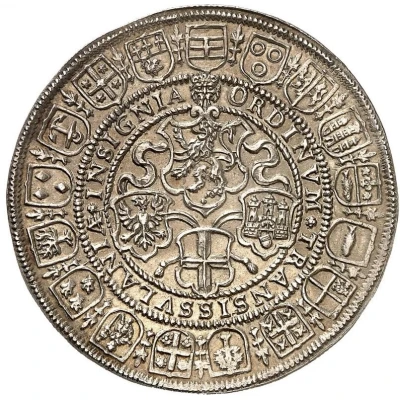Reverse
Seventeen shields within the outer border, encircling Provincial and City Arms that are all connected.
Script: Latin
Lettering: ORDINVM TRANSISSVLANIAE INSIGNIAE
Comment
Maurice organised the rebellion against Spain into a coherent, successful revolt. He reorganised the Dutch States Army together with Willem Lodewijk, studied military history, strategy and tactics, mathematics and astronomy, and proved himself to be among the best strategists of his age. The Eighty Years' War was a challenge to his style, so he could prove himself a good leader by taking several Spanish Outposts. Paying special attention to the siege theories of Simon Stevin, he took valuable key fortresses and towns during a period known as the Ten Glory Years: Breda in 1590, Zutphen, Knodsenburg in 1591, Steenwijk and Coevorden in 1592, and Geertruidenberg in 1593. In 1597 he went on a further offensive and took Rheinberg, Meurs, Groenlo, Bredevoort, Enschede, Ootmarsum, Oldenzaal and closed off the year with the capture of Lingen. These victories rounded out the borders to the Dutch Republic, solidifying the revolt and allowing a national state to develop behind secure borders. They also established Maurice as the foremost general of his time. Many of the great generals of the succeeding generation, including his brother Frederick Henry and many of the commanders of the English Civil War learned their trade under his command.
